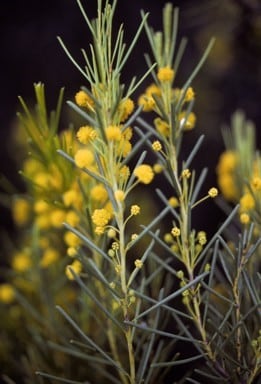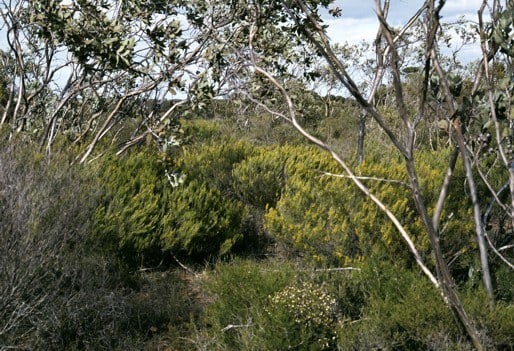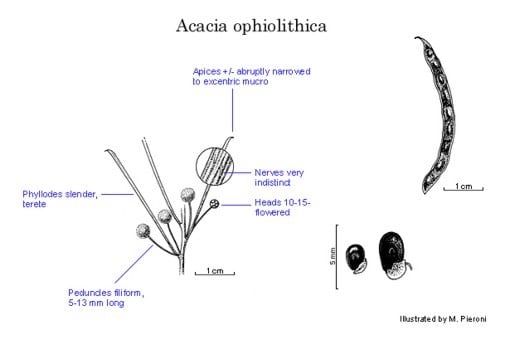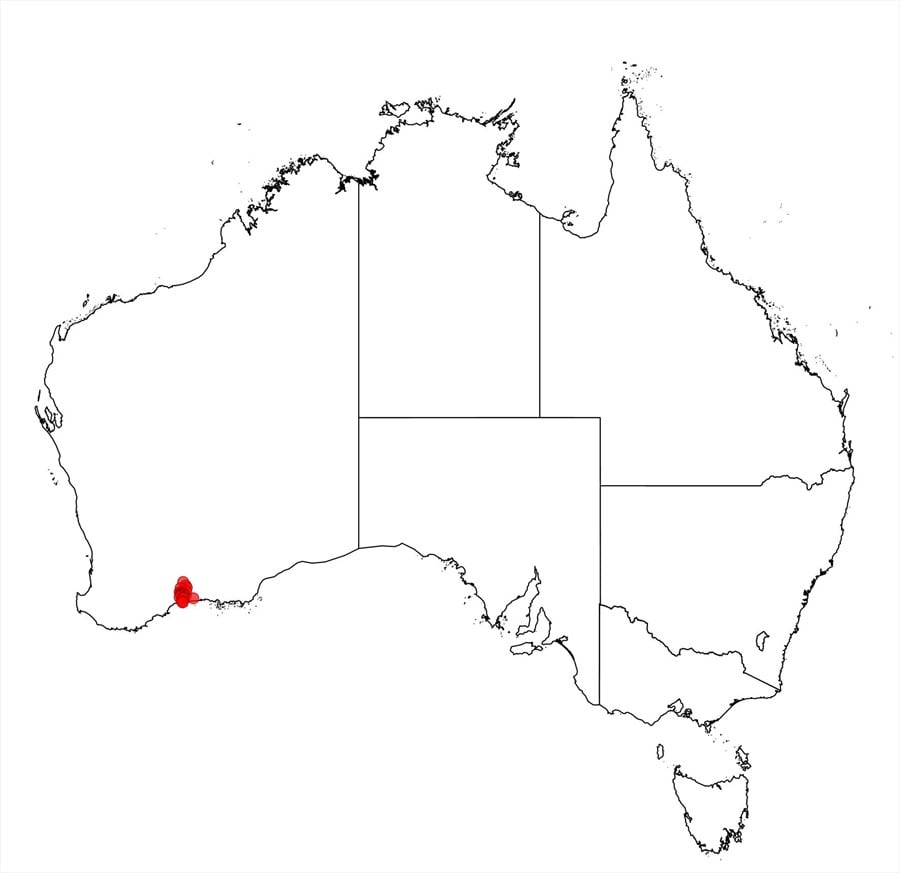Acacia ophiolithica R.S.Cowan & Maslin
WATTLE
Acacias of Australia
Family
Fabaceae
Distribution
Restricted to and locally common in the Jerdacuttup R. area E of Ravensthorpe township in south-western W.A.
Description
Bushy rounded shrub 0.3–2 m high. Branchlets glabrous, scarred by raised stem-projections where phyllodes have fallen. Phyllodes congested, ascending to erect, becoming patent, very slender, straight, terete, 1.5–4.5 cm long, 0.7–1 mm diam., ±abruptly and obliquely narrowed to a short but distinct excentric mucro, glabrous, seemingly 4- or 8-nerved but nerves very indistinct or more commonly not visible; gland often not evident, 6–14 mm above pulvinus; pulvinus slender, terete, 1.5–2 mm long, orange. Inflorescences simple, 2 per axil; peduncles filiform, 5–13 mm long, glabrous; heads globular, 3–3.5 mm diam., 10–15-flowered, bright light golden. Flowers predominantly 5‑merous; sepals free. Pods linear, slightly raised over seeds on alternating sides, not constricted between seeds, straight or slightly curved, 3–4 cm long, 2–3 mm wide, thinly coriaceous, reddish brown, glabrous; margins thickened, yellow. Seeds (slightly immature) longitudinal, oblong to obovate, c. 2 mm long, slightly shiny, dark brown; aril subterminal.
Habitat
Grows in brown to pale yellow-brown clay or clay loam derived from serpentine, sometimes rocky, on river banks and beneath mallee eucalypts, often forming dense stands.
Specimens
W.A.: c. 13 km E of Ravensthorpe, 20 Aug. 1979, E.M.Bennett s.n. (AD, K, MEL, NY, PERTH); Jerdacuttup R. elbow, C.A.Gardner 14083 (PERTH); 22.5 km E of Ravensthorpe on Hwy No. 1 to Esperance, B.R.Maslin 5461 (BM, CANB, G, MO, PERTH, Z).
Notes
A member of the ‘A. fragilis group’, differing in its habitat from its presumed closest relative, A. uncinella, which also differs in having discernibly 8-nerved phyllodes and shorter peduncles bearing heads with more flowers. It is sufficiently similar to A. uncinella that G.Bentham, Fl. Austral. 2: 341 (1864: 341), cited a G.Maxwell collection of A. ophiolithica from the Oldfield R. area as A. uncinella. It is sympatric with and superficially resembles A. binata which is most readily distinguished by its fleshy, obtuse phyllodes, larger flower-heads in short, 2-headed racemes and its curved to openly coiled pods.
FOA Reference
Data derived from Flora of Australia Volumes 11A (2001), 11B (2001) and 12 (1998), products of ABRS, ©Commonwealth of Australia
Author
R.S.Cowan, B.R.Maslin
Minor edits by J.Reid
This identification key and fact sheets are available as a mobile application:
URL: https://apps.lucidcentral.org/wattle/
© Copyright 2018. All rights reserved.










